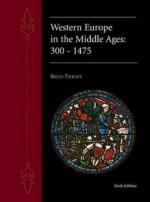|
This section contains 2,013 words (approx. 7 pages at 300 words per page) |

|
Feudal Overlords. During the Middle Ages, the Church fought to establish and maintain its autonomy, while secular rulers wanted to treat Church officials in the same way as members of the nobility. Since the Church had substantial holdings in western Europe, the income from them was a considerable fortune for whomever had control over them. Nobles held their lands and titles at the pleasure of the king, who could take both away if a liege lord displeased him. Thus, kings maintained that they, not the Church, should be able to appoint bishops and abbots and to determine what land should be allotted to them.
The Role of the Holy Roman Empire. By the ninth century the Holy Roman emperors had established themselves as the "protectors" of the Church, a role that gave them extraordinary power over both the bishops...
|
This section contains 2,013 words (approx. 7 pages at 300 words per page) |

|




